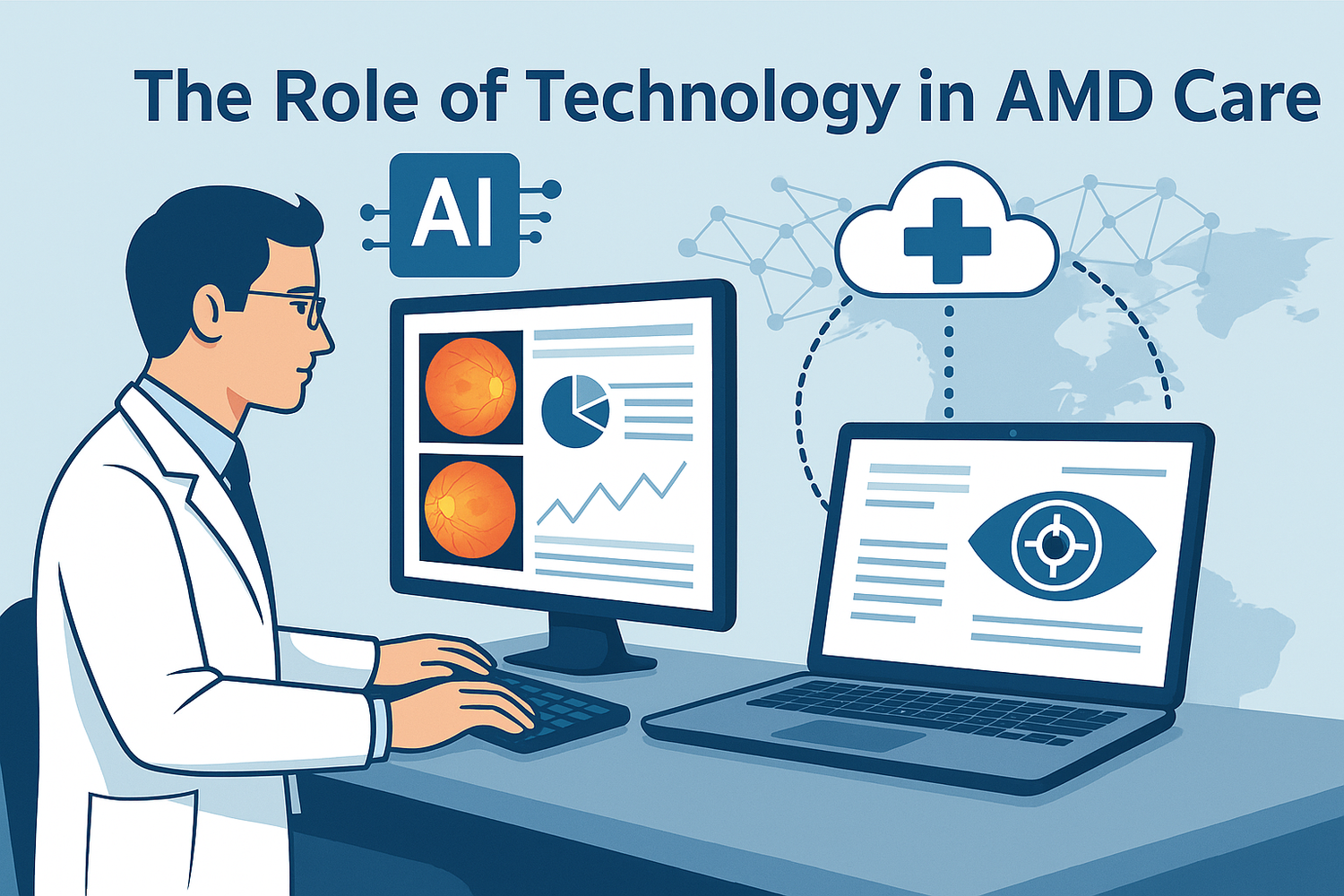Harnessing Technology and AI to Safeguard Vision and Meet the Global Challenge of AMD
Age-related macular degeneration (AMD) is a leading cause of vision loss around the world, and its impact is expected to grow significantly in the coming decades. As healthcare systems face mounting pressure, technology will be critical to addressing the challenges of early diagnosis, management, and prevention of AMD.
AMD: A Growing Global Health Concern
AMD is already a major public health challenge worldwide.
-
In Canada, AMD affects more than 2.5 million people and is responsible for 90% of new cases of legal blindness.
-
In the United States, over 18 million adults aged 40+ have early-stage AMD, with prevalence rising sharply among individuals over 80 years old.
-
In Europe, AMD affects approximately 67 million people, with a significant portion having early or intermediate-stage disease.
-
In China, projections estimate that by 2050, 55 million people will be living with AMD, making it one of the largest affected populations globally.
Across regions like France, Spain, Germany, and beyond, the impact of AMD is growing due to aging populations. Without innovation and investment, the global burden of AMD will continue to escalate, straining healthcare resources and affecting millions of lives.
How Artificial Intelligence is Shaping AMD Diagnosis
Innovations in artificial intelligence (AI) are already making a difference. AI is being developed to help physicians diagnose, classify, and predict the progression of AMD with greater accuracy and efficiency. These decision-support tools allow eye care professionals to analyze retinal images faster and more consistently, enhancing clinical decision-making.
Looking ahead, AI-assisted telemedicine could enable large-scale epidemiological studies and provide a uniform, standardized grading system for AMD classification—helping bridge the gap between underserved regions and specialized care.
Meeting the Growing Demand: A Shift in Healthcare Infrastructure
To manage the increasing burden of AMD, healthcare infrastructure and care pathways must evolve.
This includes:
-
Integrating AI-powered diagnostic tools into everyday clinical practice
-
Expanding telemedicine services for remote consultations and follow-up care
-
Investing in early detection and preventive strategies
-
Training and expanding the healthcare workforce to meet rising demand
By incorporating technology-driven solutions into routine care, healthcare systems can improve efficiency, enhance access, and provide timely care to patients at all stages of AMD.
A Vision for the Future
While technology is a powerful tool, it must be accompanied by strategic investments and policy changes.
Prioritizing eye health in national and regional health strategies, embracing AI and telemedicine innovations, and supporting patients and caregivers through better services will be essential for the future.
By embracing these advances, we can enhance quality of life, reduce the burden of AMD, and offer hope to millions of individuals worldwide.



Leave a comment
This site is protected by hCaptcha and the hCaptcha Privacy Policy and Terms of Service apply.